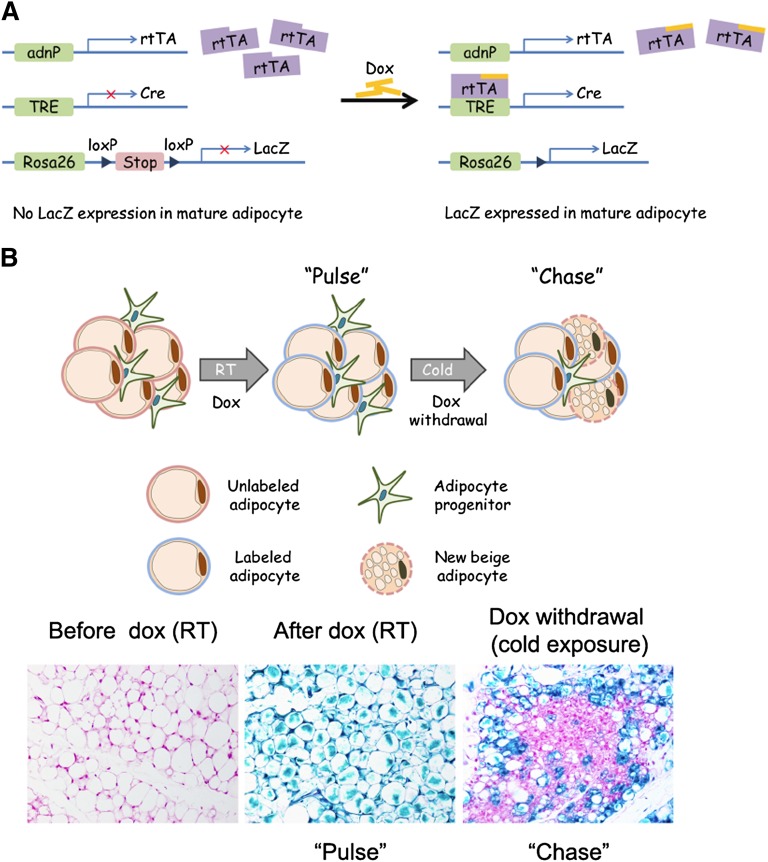Fig. 1.
Tracking adipogenesis in vivo using the AdipoChaser mouse. A: The AdipoChaser mouse. AdipoChaser mice are derived from interbreeding three transgenic strains: 1) transgenic mice expressing the “tet-on” transcription factor rtTA under the control of the adiponectin gene promoter (Adn-rtTA); 2) a tet-responsive CRE (TRE-Cre) line that can be activated with rtTA in the presence of doxycycline (Dox); and 3) Rosa26 LacZ reporter mice expressing a reporter gene from the Rosa26 locus in a Cre-dependent manner (Rosa26-loxP-STOP-loxP-LacZ). In the absence of doxycycline, rtTA remains inactive and there is no Cre expression. Upon treatment with doxycycline, rtTA activates the TRE promoter to induce Cre expression, and Cre protein will subsequently eliminate the floxed transcriptional stop cassette and permanently turn on reporter gene expression in every mature adipocyte present during doxycycline exposure. B: Tracking cold-induced beige adipogenesis in inguinal WAT. Prior to doxycycline treatment, inguinal adipocytes are devoid of LacZ expression. Upon doxycycline treatment at room temperature, all adipocytes become LacZ positive (pulse labeling). After doxycycline withdrawal, mice were switched exposed to 4°C for 3 days; accumulated multilocular adipocytes are observed as LacZ negative, indicating that they were formed from cells originally unlabeled rather than preexisting mature adipocytes.

